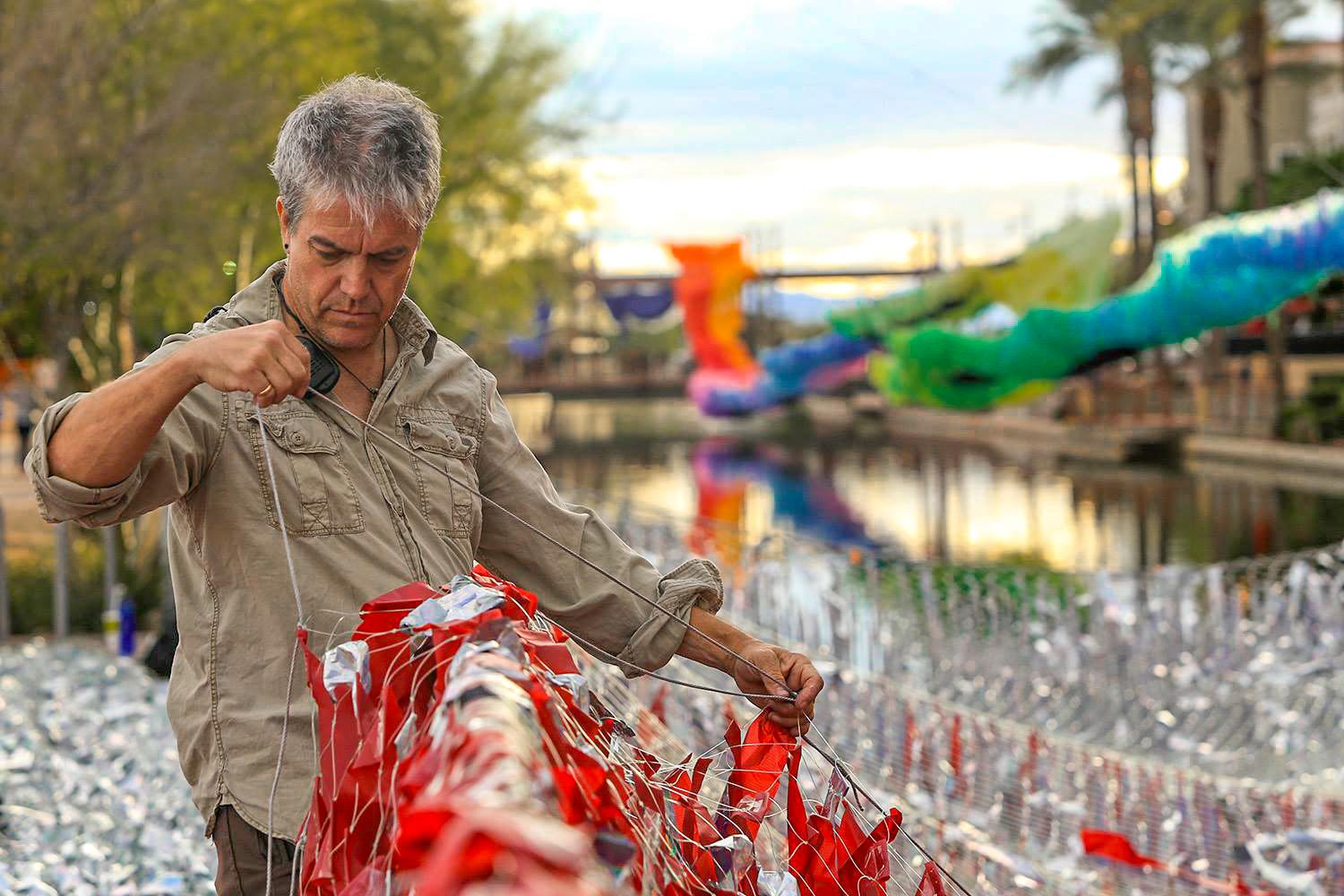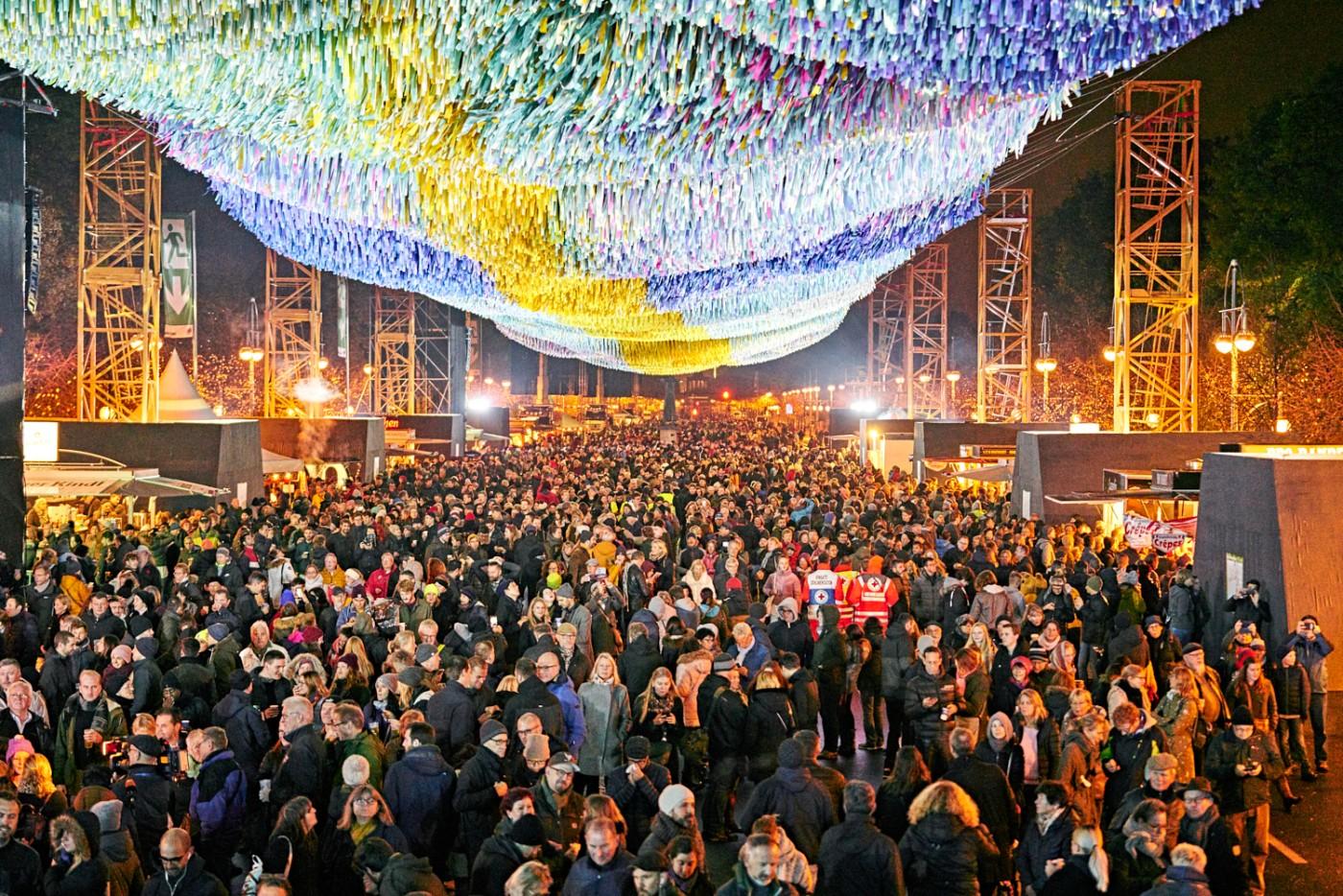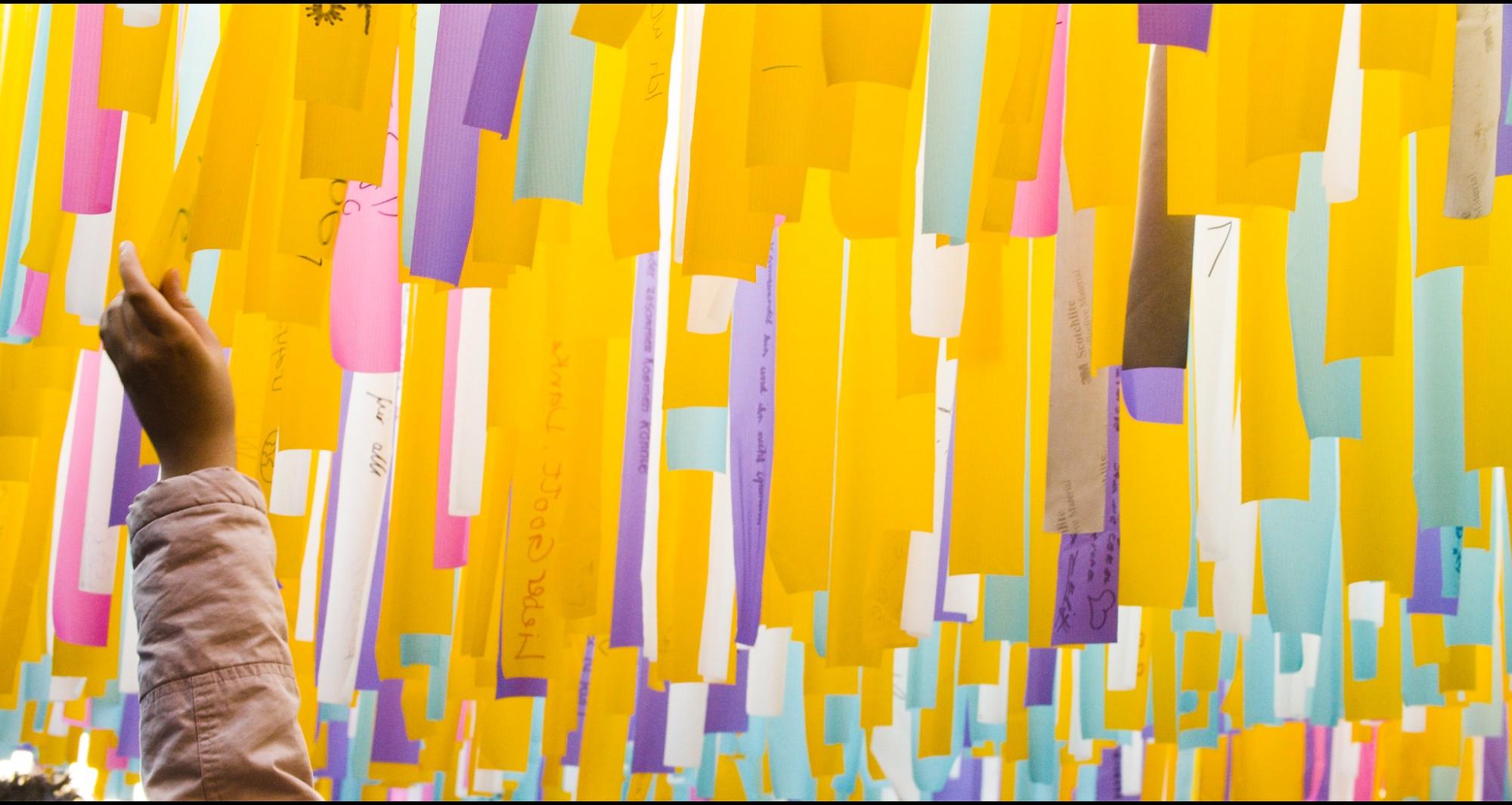Cynthia Close: The Berlin installation was an incredible happening. How did A Change in the Air evolve from there?
Patrick Shearn: Berlin was one of the first projects to collect messages. People responded to the open-ended prompt What if…? [For Change in the Air] we initially were creating an idea around kids in cages, then COVID and Black Lives Matter happened. We decided to focus on what mattered to people. We wanted to look for solutions. We can’t go back to the way things were. Ideas need to come from everywhere and we are looking for how we want to design a future together.





























